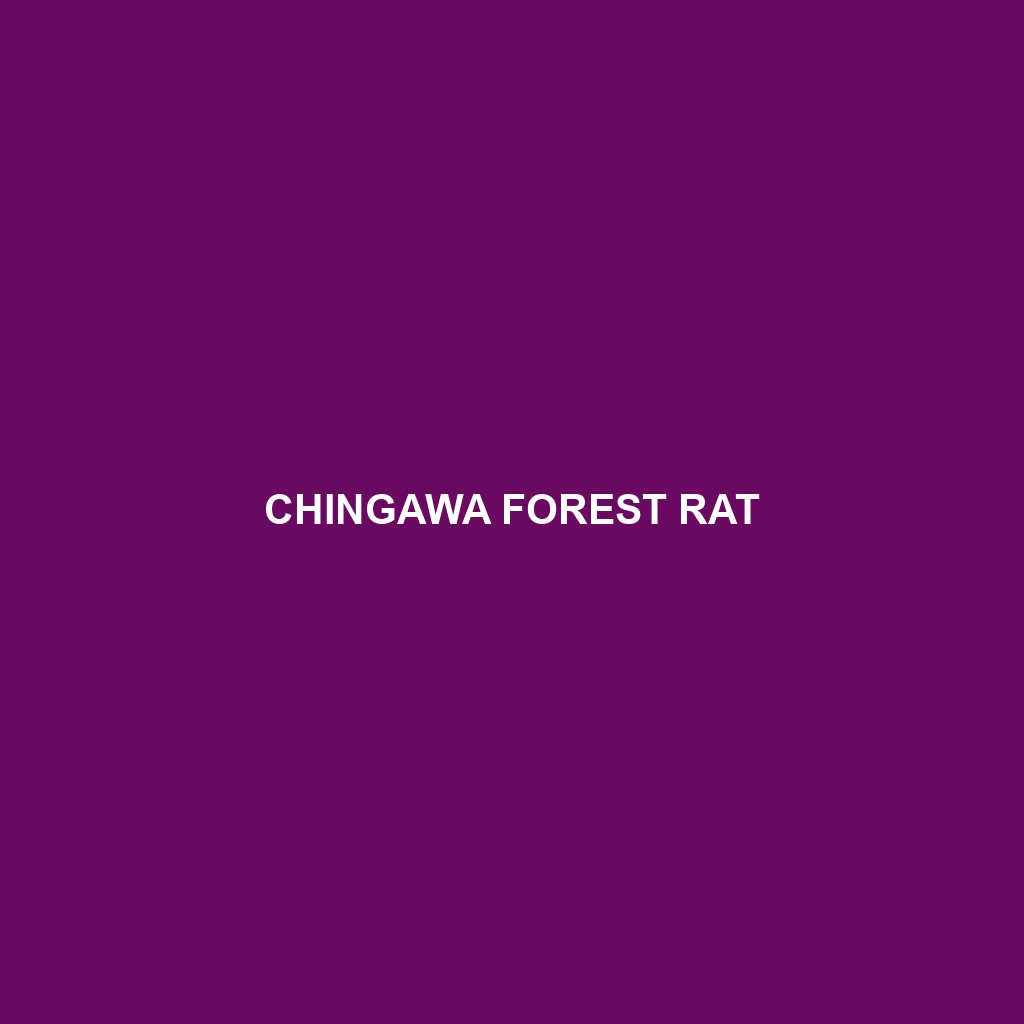Chingawa Forest Rat
Common Name: Chingawa Forest Rat
Scientific Name:
Habitat
The Chingawa Forest Rat primarily inhabits the dense, tropical rainforests of Central Africa, particularly within the Chingawa Forest region. This rodent is often found near streams and rivers, where it thrives in the humid environment characteristic of lowland forests. Its habitat is crucial for the survival of various flora and fauna, making the conservation of these forests vital.
Physical Characteristics
The Chingawa Forest Rat is medium-sized, typically measuring between 25 to 30 centimeters in length, excluding the tail. It features a distinctive fur coat that ranges from a dark brown to a soft gray, often with lighter underbellies. Its long, slender tail aids in balance and climbing, while its sharp incisors are well-suited for foraging in its forest habitat. These physical traits make the Chingawa Forest Rat easily identifiable among other rodent species.
Behavior
Chingawa Forest Rats are predominantly nocturnal, showcasing traits typical of forest-dwelling rodents. They are known for their excellent climbing abilities, allowing them to escape predators and forage for food among the trees. Social interaction is common, as these rats can often be seen foraging in small groups, sharing resources, and communicating through various squeaks and body language.
Diet
Feeding primarily on seeds, fruits, and roots, the Chingawa Forest Rat plays a significant role in seed dispersal within its habitat. This rodent has adapted to include a variety of plant material in its diet, which helps maintain the ecological balance of the rainforest. Additionally, it occasionally consumes small insects, reflecting its omnivorous feeding habits.
Reproduction
The breeding season for the Chingawa Forest Rat typically occurs during the wet season, which provides ample food resources for raising young. After a gestation period of approximately 3 weeks, females give birth to litters of 3 to 6 offspring. Notably, both parents participate in caring for the young, ensuring their survival during the vulnerable early stages of life.
Conservation Status
Currently classified as vulnerable by the IUCN Red List, the Chingawa Forest Rat faces threats primarily due to habitat destruction from logging and agriculture. Conservation efforts are essential to protect this unique species and its habitat from further degradation.
Interesting Facts
The Chingawa Forest Rat exhibits remarkable agility and can leap distances several times its body length. In addition, research suggests that its presence is an indicator of a healthy forest ecosystem, as it helps to maintain plant diversity through seed dispersal.
Role in Ecosystem
As a significant component of the forest ecosystem, the Chingawa Forest Rat contributes to the dispersal of seeds and the health of plant communities. Its interactions with various species highlight its role in maintaining biodiversity, making it vital for the overall stability of its environment.
